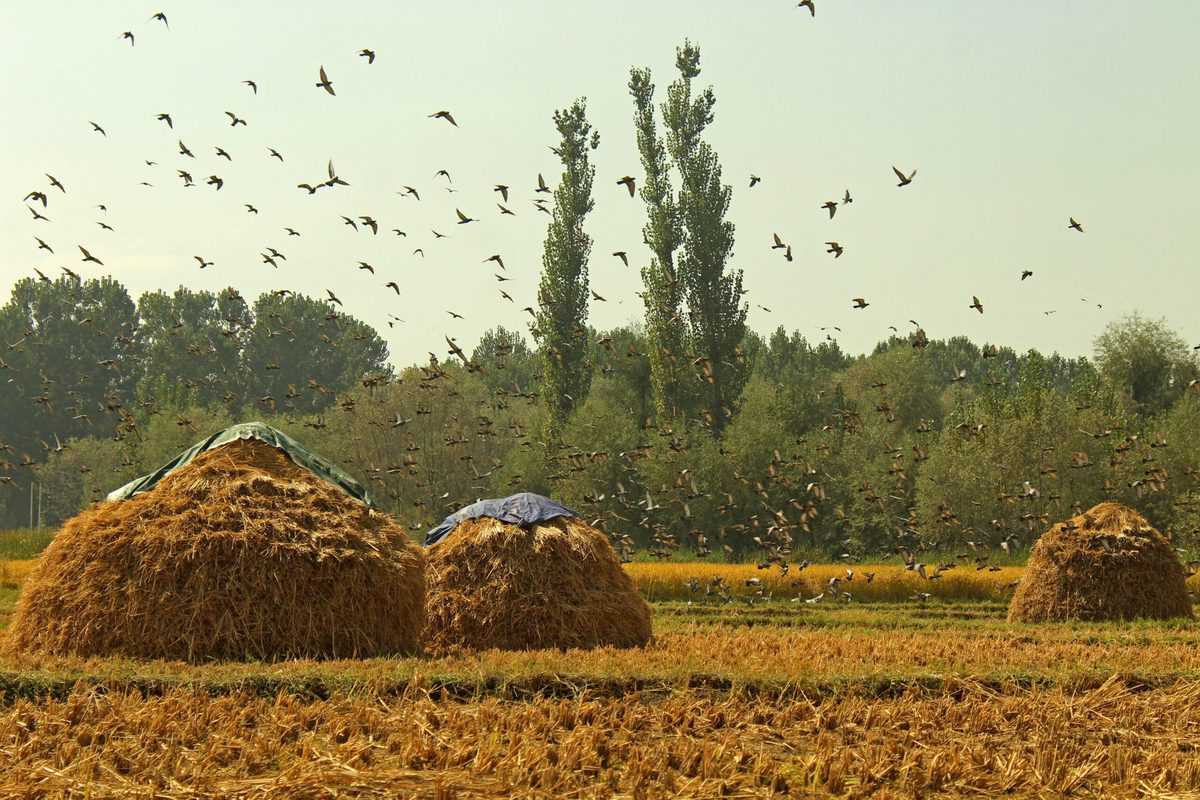Paddy Area Up 4.4%, Pulses Down 8.3%: Kharif Sowing Just Above Year-Ago Level

Paddy Area Up 4.4%, Pulses Down 8.3%: Kharif Sowing Just Above Year-Ago Level
The amount of land planted in kharif crops is somewhat more than it was at this time last year with only a few days left in the sowing season. A little increase of 0.34% year over year has resulted in the coverage of 105.3 million hectares (MH), or about 97% of the usual sown area.

The below average rainfall in August thus far, however, may have an influence on the production of crops including paddy, pulses, and oilseeds after a surplus July, authorities warned. To prevent an increase in food costs, the yield will be essential.
Paddy transplanting is currently rising 4.4% year over year (y-o-y) and is largely finished. Approximately 96% of the usual seeded area, or 38.4 MH, has had rice transplanted thus far. Due to the monsoon rains’ delayed arrival in eastern parts, sowing will be finished in a few days. Starting on October 1, crops will be harvested.
The Centre last month forbade the export of white rice because it anticipated a decline in output and an increase in food inflation.
Experts warned that floods in some areas of Punjab and a delay in seeding might have an impact on kharif paddy, which accounts for 80% of the nation’s rice supply.
While the area planted with oilseeds, such as peanut, soybean, and sunflower, is slightly lower on year, the planting of pulses, including tur, urad, and moong, is now 8.3% behind schedule. The area planted with sugarcane is up 0.8% year over year, and the area planted with coarse grains including ragi, bajra, and maize is up 1.1%.

While sugarcane is being planted in somewhat more area than previous year, cotton sowing is slightly below last year’s level.
The minimum support prices (MSP) of important kharif crops for the 2023–24 season (July–June) were increased by the government in June by 6–10.4%, which was the greatest rise since 2018–19. The fixed MSP for paddy is $2,183 per quintal, up 7% from the previous year.
The long period average (LPA), the standard for measuring monsoon rainfall, has been missed by 7% up till Friday, according to the India Meteorological Department (IMD). Overall monsoon rains have been at a “below normal” level. According to the met department, normal or above-average rainfall has been recorded in 61% of the nation’s 717 districts thus far. Only insufficient and sparse rainfall has been obtained by the other 283 districts.
Rainfall is still 18% and 16% below LPA in the southern peninsula and the east and north-east regions, respectively.
The rapid decline in water level in southern areas has caused the water levels in 146 important reservoirs to drop 21% below last year’s level and 6% below the average of the previous 10 years.
Next month, the agricultural ministry will announce the first preliminary estimate of foodgrain output for the crop year (July-June) 2023–24. The agricultural ministry said that during the crop year 2022–2023, India’s foodgrain output increased 5% year over year to a new high of 330.5 million tonnes.

In a significant development for the agricultural sector, latest data indicate a 4.4% increase in the paddy area for the current kharif season compared to last year. Conversely, the sown area for pulses has seen a decline by 8.3%. The overall kharif sowing this year is just slightly above the year-ago levels, a factor that has both policymakers and farmers alert for diverse reasons.
The increase in the paddy sowing area is a crucial data point that holds implications for multiple stakeholders. For the farmers, a larger paddy area usually equates to increased output, subject to favorable climatic conditions. This could potentially mean better returns for the growers. For policymakers, the rise is indicative of the success of various schemes aimed at enhancing rice production, one of the staple foods in the country.

Investments in irrigation infrastructures have paid off, providing the necessary water supplies.Policies such as higher Minimum Support Prices (MSP) have incentivized the farmers.The export market for rice has seen a steady increase, motivating farmers to grow more paddy.
Favorable monsoon conditions have also played a role in encouraging farmers.
Pulses are a critical source of plant-based proteins and essential nutrients.They are also important for soil health, being nitrogen-fixing crops.
Lower sown area could lead to higher prices, making pulses less affordable for the average consumer.Unlike paddy, the market prices for pulses can be very volatile, discouraging farmers.
Fewer subsidies and support compared to paddy or wheat.Some pulse crops are more sensitive to climatic changes, making them riskier to cultivate.

The overall kharif sowing being only marginally above the previous year points towards a larger stagnation within the agricultural sector. While it is positive that there hasn’t been a decline, the almost flat growth rate indicates the need for interventions to boost agricultural productivity.
Encouragement of crop diversification to avoid over-dependency on a single crop like paddy.Special packages and policies aimed at incentivizing the sowing of pulses.
Adoption of modern agricultural technology to enhance productivity.Develop better marketing strategies for both domestic and international markets to ensure fair prices for farmers.
The kharif sowing data for this year sends mixed signals. While the increase in paddy cultivation is promising, the decline in pulses’ sowing area and the overall stagnation in the kharif sowing area serve as warning signs. Strategic policy interventions are essential to ensure that agriculture continues to be both profitable for farmers and sustainable for the environment.

The current data thus stands as a crucial indicator for shaping future agricultural policies, and it will be interesting to see how both the government and farmers adapt to these changing dynamics.




